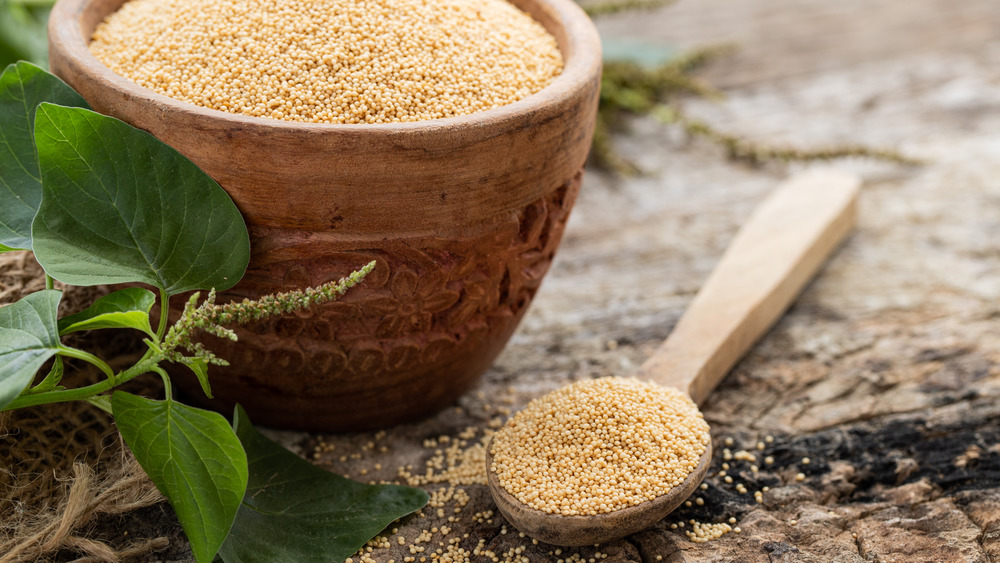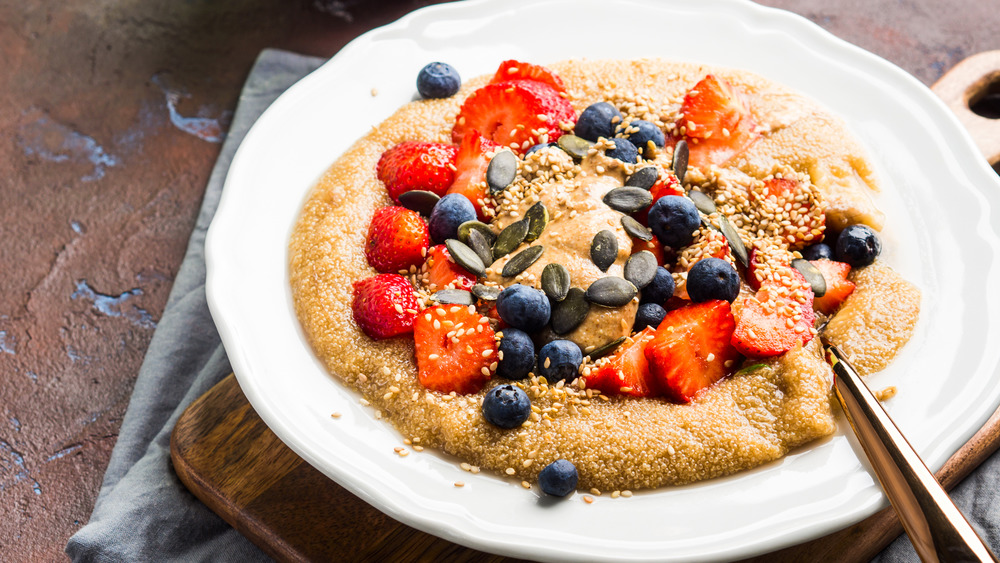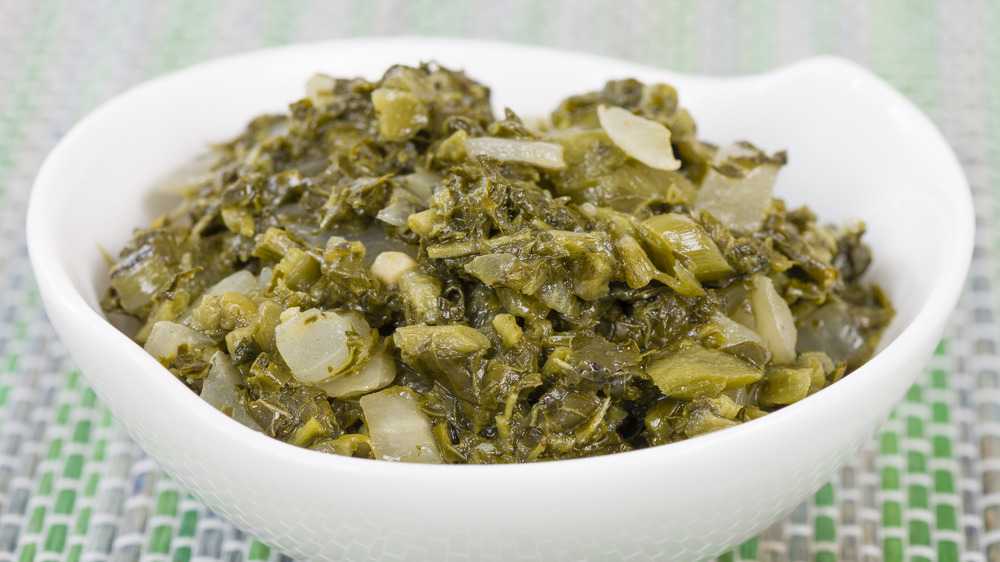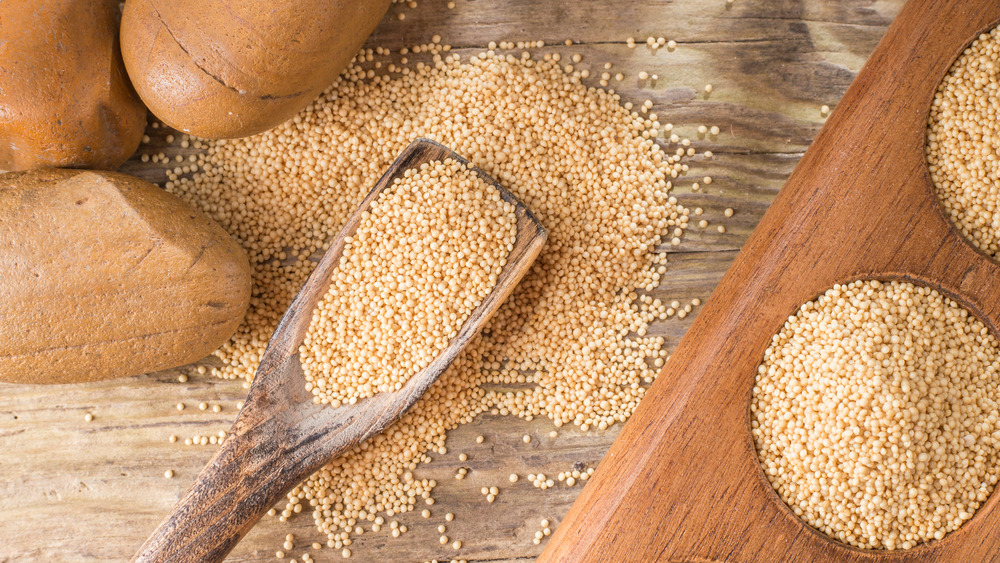Why Amaranth Is A Lot Healthier For You Than You Realize
If you always wanted to incorporate more ancient grains into your diet, you can't go wrong with amaranth. According to the Oldways Whole Grains Council, this grain sprung up in Central and South America between 8,000 and 6,000 years ago and played a major role in the Aztec diet. Another variant of amaranth appeared around the same time in ancient China, and while researchers have yet to determine the significance of these geographic differences, everyone can agree that this wholesome ancient grain can do a ton of good for your health.
Celine Beitchman, Director of Nutrition at the Institute of Culinary Education, explained to Mashed why this amazing grain is so beneficial. "Amaranth is both a seed and a leafy plant," Beitchman said. "The small, tan seeds cook up just like ordinary grains and are sometimes referred to as pseudo-grains. Dry or cooked, amaranth seeds have a similar texture to fine bulgur wheat or whole wheat couscous." Beitchman added that amaranth tastes slightly sweet, nutty, earthy, and has some bitter notes. "Along with teff, amaranth is thought to be among the smallest so-called grains that humans consume."
How to use amaranth, from seed to leaf
If you want to get the most bang for your buck, you have to eat the plant's seeds. "Amaranth seeds are complete proteins which sets them apart from true grains that don't contain all of the essential amino acids humans need," Beitchman said. "You don't need to combine protein from beans or nuts the way you do in the case of brown rice, for example." Beitchman explains that amaranth seeds are gluten-free, and so a flour made from them can be a good protein-rich replacement for wheat.
You don't have to feel constrained to the seeds if you want some variety. "The leaves of the amaranth plant resemble young spinach and can be used in similar ways," Beitchman said. "Some red-veined varieties have a sourness that lend bright lemony notes, especially when used in salads. I love them as microgreens where they pack flavor and visual appeal in a small package."
"While it was a staple among the Aztecs, amaranth is still widely used in foods throughout Mexico, Peru, and South America," Beitchman continued. "Across those regions, amaranth seeds are used as a grain, fermented into both sweet and alcoholic beverages, ground into flour in stovetop and baked goods, and popped like popcorn for crunchy treats." You can use amaranth leaves in soup, salads, and sautées, where you'd otherwise use leafy greens. "You can also find amaranth in regular use in the Caribbean, and throughout India and Africa where the seeds may also be pressed into oil," Beitchman said.
The best way to cook amaranth
You might think preparing this grain could prove challenging, but Beitchman explained that there's nothing to it. "This grain is very forgiving," Beitchman said. "Its outer seed coat doesn't break down easily like you see in other true grains. Amaranth can withstand long overnight soaking."
"In general, cook it like you would brown rice at a ratio of one cup grain to one and three quarter cup water," Beitchman explained. "Bring those to a boil together, then simmer until cooked (about 20 to 30 minutes). If it needs more time, add water in quarter-cup increments and keep cooking at a simmer until done, adding more water as needed." That cooked mixture can then be used for a plant-based burger or hearty stew, she recommends.
While anyone can pull off this cooking method, approach preparing the seeds with caution. "The seeds and especially the ground flours — because they are densely concentrated — may be more bitter than you like," Beitchman said. "So recipe testing is recommended when swapping amaranth into a recipe you love. If bitterness is the result, it might be inedible. If too much water was used and you're not making porridge or a polenta-like dish, the result may be gummy."
Getting the optimal amaranth texture
Trying to find the optimal texture for amaranth takes a bit of practice, but once you taste a properly cooked bowl of the grain, you know what to look for going forward. "It should have a little chew to it, like brown rice," Beitchman said. "The seeds will be visible as separate 'grains.' They have a very pleasant mouth-feel when cooked up into sides and porridge." Beitchman adds that "you can also cook these seeds like pasta and pour off excess water after simmering the seeds until tender."
Bringing this food into your recipe rotation just takes a bit of imagination, and Beitchman has the perfect solution. "Buy some the next time you see it and cook up a cup or two," Beitchman suggests. "Try swapping it into your favorite recipe in place of the grain or seed that's called for. You can purchase the mini popped seeds in Indian grocery stores and snack on these or buy some amaranth flour and add a little in place of other flours the next time you are baking or pan-caking."
This excellent source of folate, a B-vitamin vital for neurological and reproductive systems, should enter anyone's diet who craves a change. Verywell Fit explains that whole grains like amaranth have the potential to lower cholesterol levels, can help you maintain muscle, and help reduce the risk of heart disease.



